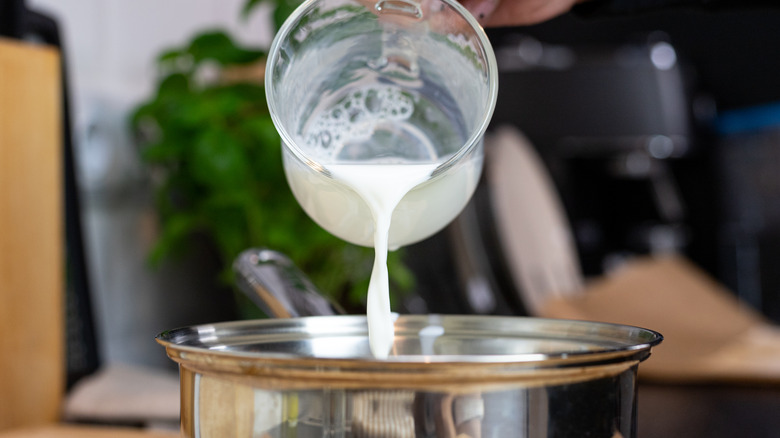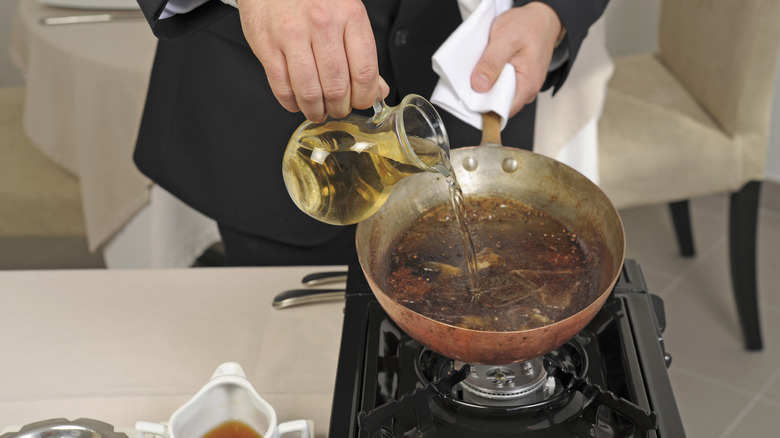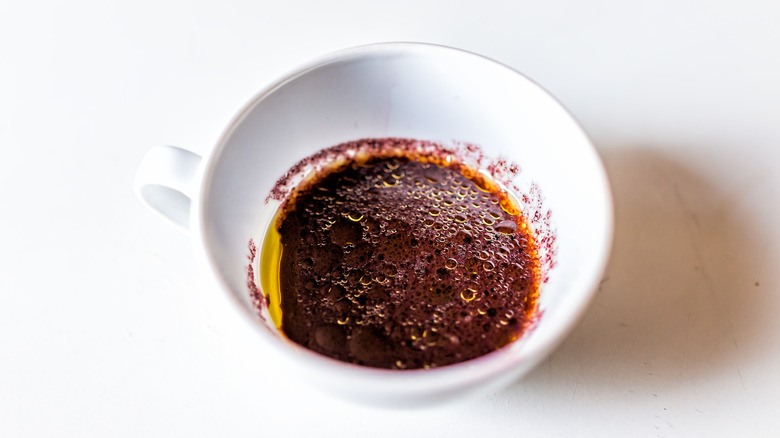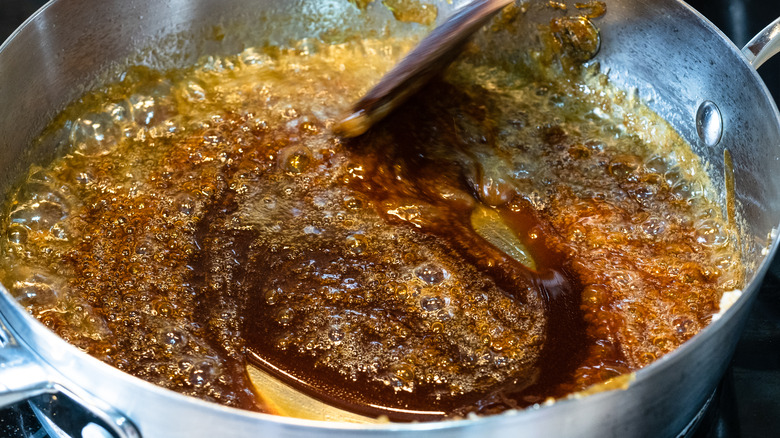The 3 Techniques That Turn French Mother Sauces Into Small Sauces
For many the world over, French cuisine is the gold standard — including its five mother sauces that have permeated recipes everywhere. But you don't need professional training to uncover the secrets of making mother sauces along with their "daughters."
Classic French cuisine includes five "mother sauces," which were laid out by legendary Georges Auguste Escoffier. Those five sauces include béchamel, Espagnole, hollandaise, sauce tomate, and velouté. From each, there are additional "small sauces" or "daughters" that can be made according to Saveur. The mother sauces serve as a base, and each of the daughter sauces enhances the existing flavor or texture of the mother sauce. However, you will need to do more than stir in additional ingredients to achieve the daughter sauces.
There are three techniques that can be used to transform each mother sauce into a daughter sauce. But to know when to use each method, it is imperative that you know which daughter sauces can be made from the five mother sauces.
According to MasterClass, aurora sauce, mornay sauce, nantua sauce, and soubise sauce all come from béchamel. Espagnole yields demi-glace, chasseur sauce, sauce bourguignonne, madiera sauce, port wine sauce, mushroom sauce, and red wine reduction, among others. Hollandaise sauce can be used to make béarnaise, mousseline, choron, and foyot. Sauce Tomate is the base for Spanish, Portuguese, and Creole sauces. And finally, velouté is the source of allemande sauce and normande sauce in addition to sauce suprême and albufera sauce.
Technique One: Deglaze
The first technique that can be used to make a daughter sauce from a mother sauce is to sauté aromatics or sear a cut of meat prior to deglazing the pan, according to The Culinary Pro. To use this method, the sauce's key ingredients, such as vegetables, are browned and seasoned in a pan. Once the seasoned vegetables become aromatic, it is time to move to the second step of this technique: deglazing.
To deglaze, you can use many different kinds of liquid ranging from wine and liquor to juice and stock, according to PBS. Julia Child recommended this technique to "capture the richest flavors" in a sauce. Once the browned bits have released from the pan and are in the sauce, add your prepared mother sauce into the pan and allow it time to simmer. Once the contents have simmered into a delicious, balanced mixture, The Culinary Pro advises finishing with monter au beurre. That simply means adding a form of dairy to the sauce, such as butter, cream, or yogurt, among other options, to balance acidity and add more richness.
Using this method, you can make chasseur sauce from Espagnole and sauce bourguignonne or mushroom sauce, among others.
Technique Two: Reduction
Another common technique you can use at home to make additional sauces from your base mother sauce is reduction (via The Culinary Pro). This method makes red wine reduction, madiera sauce, and port wine sauce, among others. While reducing a liquid and adding a prepared mother sauce to create a flavorful daughter sauce is very similar to sautéing and deglazing, it is actually simpler.
To reduce a liquid into a sauce, simply add your chosen liquid along with any aromatics to a pan and allow it to cook until it has lost a quarter of its volume. By cooking the liquid, water will evaporate, leaving a thicker texture. Again, add the mother sauce once the original liquid has reduced, and allow the combined contents to simmer until the flavor and texture are as you want them. Dairy can also be added at the end to enrich the sauce and give it a nice finish. According to PBS, Julia Child also liked to adjust the amount of salt when making sauces.
Technique Three: Flavoring with Gastrique
The third and final technique is one home cooks might not be quite as familiar with. It is known in French as the gastrique method, according to The Culinary Pro. A gastrique is a cooked combination of two ingredients: sugar and vinegar. Sometimes fresh but highly acidic fruits are used instead of vinegar, such as grapefruit, oranges, lemons, or cranberries. Regardless of the source of acidity, you should plan to use a two-to-one ratio of sugar to acid.
First, sugar is caramelized in a pot or pan before being deglazed with one of many different types of vinegar that you can choose from. Once this mixture has been cooked and removed from the stovetop, you can use it to flavor a prepared mother sauce. After the sauce has simmered to combine, you can also add additional aromatics and flavors to the sauce. Once again, adding dairy will help balance out the acidity of this sauce while giving it a picture-perfect shine.
Sauces that use this method include bigarade and agrodolce sauce.
No matter which technique or sauce you plan to make, take another tip from Julia Child and make your sauce well in advance (via PBS). By allowing your sauce to sit in the fridge for a few hours, the flavors and aromatics will develop and create more flavor.



